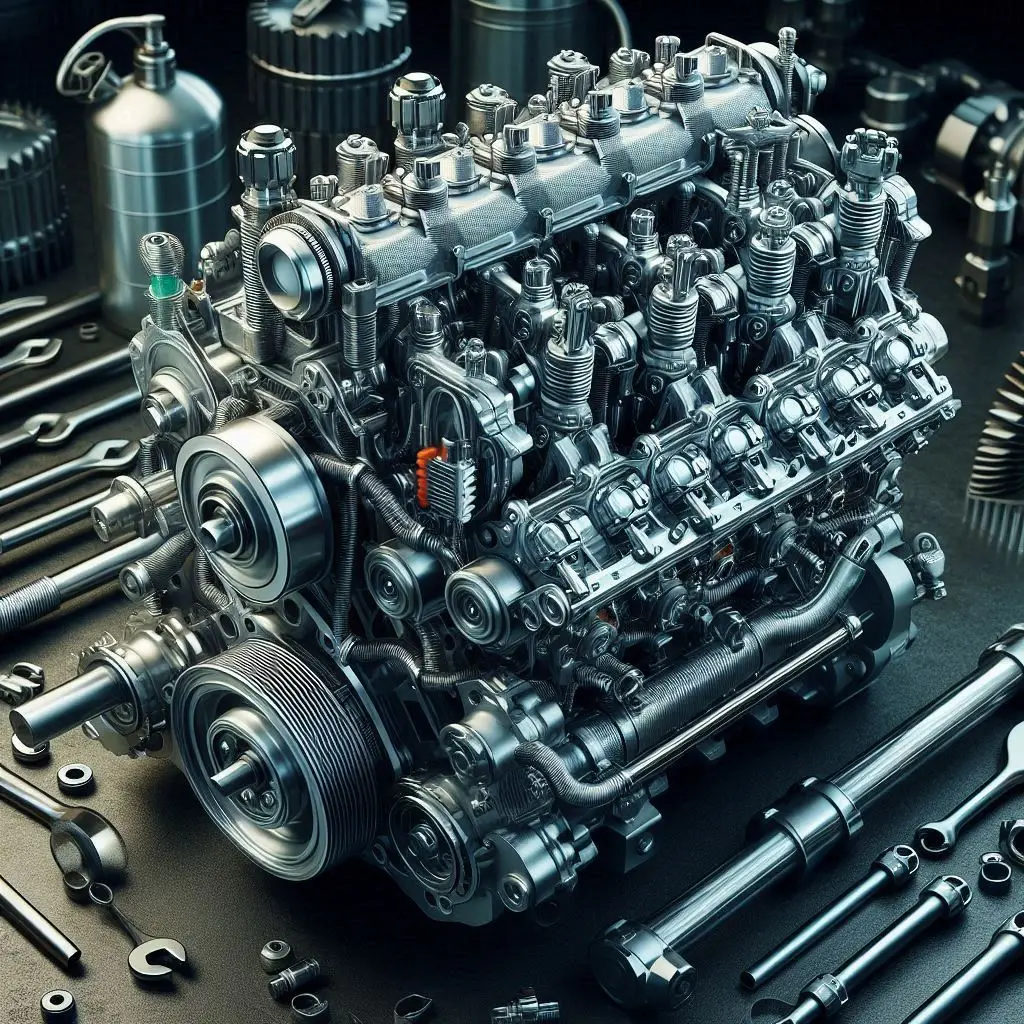
Gasoline engine
In this essay, gasoline engine, I am going to look into the fundamental components, operating principles, and efficiency elements of gasoline engines, as well as the environmental effect that they have.
The internal combustion engine, namely the gasoline engine, has been a major contributor to the development of the modern world by delivering power to a variety of different sectors. It has a long history of pioneering new ideas and continues to develop in response to shifting concerns about the environment and rising expectations on efficiency.
Gasoline engines, despite the fact that they offer indisputable benefits, also come with environmental issues owing to the pollutants they produce and the amount of fossil fuel they use. The automobile industry is rapidly looking to alternate propulsion systems, such as electric and hybrid technologies, in order to solve these concerns.
It is possible that in the not-too-distant future, gasoline engines will have increased fuel economy, less emissions, and a consumption strategy that is more environmentally friendly. The capacity of the industry to strike a balance between performance and environmental responsibility will determine whether or not it continues to play a significant role in our society or gives way to cleaner alternatives.
An internal combustion engine that runs primarily on gasoline is referred to as a gasoline engine. This kind of engine is also sometimes referred to as a petrol engine. These engines are used in a wide variety of applications, including lawn mowers, power generators, automobiles, and several others.
Introduction:
Engines that run on gasoline are vital to the functioning of today's transportation and manufacturing systems. They are well-known for their adaptability, user-friendliness, and relatively good power-to-weight ratios in comparison to other similar products. This section offers a summary of the significance that gasoline engines have played in the history of civilization as well as their historical evolution.
Contextualization of the Past
Early contributors to the development of gasoline engines include Nikolaus Otto, Gottlieb Daimler, and Karl Benz. The history of gasoline engines may be traced back to the late 19th century. The development of the four-stroke engine, often called the Otto cycle since it was named after its inventor, lay the groundwork for the development of contemporary gasoline engines. Since that time, ongoing research and development have resulted in improvements to their effectiveness and functionality.
Principal Constituents
The following are some of the most important parts that make up gasoline engines:
The primary component that houses the engine's cylinders is referred to as the cylinder block.
Cylinders are defined as hollow tubes that facilitate the movement of reciprocating pistons.
Pistons are components that slide inside cylinders and compress air and fuel.
The crankshaft is responsible for transforming linear motion into rotary motion.
The camshaft is the component of the engine that determines when the valves open and close.
Valves are components of an internal combustion engine that regulate the flow of air, fuel, and exhaust gases into and out of the cylinders.
The ignition system is what kickstarts the process of combustion.
The fuel system is responsible for regulating the flow of gasoline to the engine.
The cooling system is responsible for preventing the engine from being overheated.
Principles of Operation
The functioning of a gasoline engine may be broken down into a few distinct phases, which are as follows:
During the intake stroke, the intake valve is allowed to open, which enables a combination of air and fuel to enter the cylinder as the piston goes lower.
During the compression stroke, the intake valve is shut off and the piston advances upward, which causes the air-fuel combination to become more compressed.
Power Stroke: The spark plug ignites the compressed mixture, which results in a fast expansion that drives the piston down and generates mechanical energy. This process is known as the Power Stroke.
During the exhaust stroke, the exhaust valve is allowed to open, which lets the gases that have been burnt out of the cylinder when the piston returns to the top of the cylinder.
The continual repetition of this sequence of strokes, which together make up the four-stroke cycle, is what gives the engine its power.
Efficacy Considerations
Several variables contribute to the overall efficiency of a gasoline engine, including the following:
Compression Ratio: An increase in the compression ratio will result in an increase in the thermal efficiency.
Efficiency of Combustion requires having the right proportions of air to fuel and the right time for the ignition.
Reduced friction results in a decrease in the amount of energy that is lost due to sliding contact between moving surfaces.
The use of effective cooling systems is an important part of effective thermal management since it helps to keep operating temperatures at their ideal levels.
Influence on the Environment
The environment is significantly impacted by gasoline engines in the following ways:
Emissions: They cause the production of carbon dioxide (CO2) and a variety of other pollutants, which contributes to the warming of the planet's atmosphere and to air pollution.
Fuel Consumption: Gasoline engines need the use of fossil fuels, which are a resource that is both limited and non-renewable.
The running of gasoline engines may be a contributor to the problem of noise pollution.
Among the measures that are being taken to lessen the severity of these effects are the production of hybrid and electric cars as well as the implementation of more stringent emission regulations.

